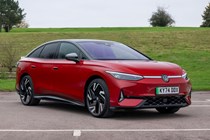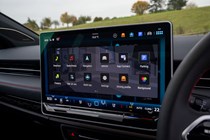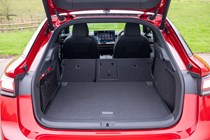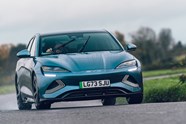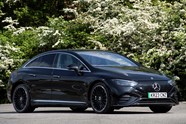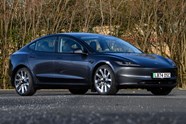
Volkswagen ID.7 GTX review

At a glance
| Price new | £59,110 - £61,000 |
|---|---|
| Used prices | £33,572 - £43,780 |
| Road tax cost | £620 |
| Insurance group | 41 |
Get an insurance quote with

|
|
| Fuel economy | 3.7 - 3.8 miles/kWh |
| Range | 321 - 366 miles |
| Miles per pound | 5.9 - 11.2 |
| Number of doors | 5 |
| View full specs for a specific version | |
Available fuel types
Fully electric
Pros & cons
- Spacious, high-quality interior
- Comfortable and refined for a sporty EV
- Decent performance
- Not much more engaging to drive than standard ID.7
- Significant range hit compared to regular model
- Expensive list price compared with rivals
Volkswagen ID.7 GTX rivals
Overview
We like the Volkswagen ID.7 so much that we named it our Best Large Family Car 2025. Top honours were awarded to it for its comfortable ride and spacious interior. In fact, it’s the ID.7’s general relaxed approach we appreciate the most.
Volkswagen is now introducing a sportier GTX model to the ID.7, and the very nature of a performance car is one at odds with this car’s usual relaxed, easy-going nature.
The GTX isn’t a full-blown performance car, but aims to add additional spice to VW’s flagship electric car. The first way this is achieved is through it having a second electric motor, taking the power up to 340hp and making this the first all-wheel-drive ID.7 you’ve been available to buy.
The ID.7 isn’t the first electric Volkswagen to get the GTX treatment, though, with the nameplate already appearing on the ID.4, ID.5, ID.Buzz and most recently, the ID.3 GTX. It’s a similar recipe adopted here as on those other models, with the ID.7 GTX gaining thicker anti-roll bars and adaptive suspension as standard, as well as a subtle redesign inside and out.
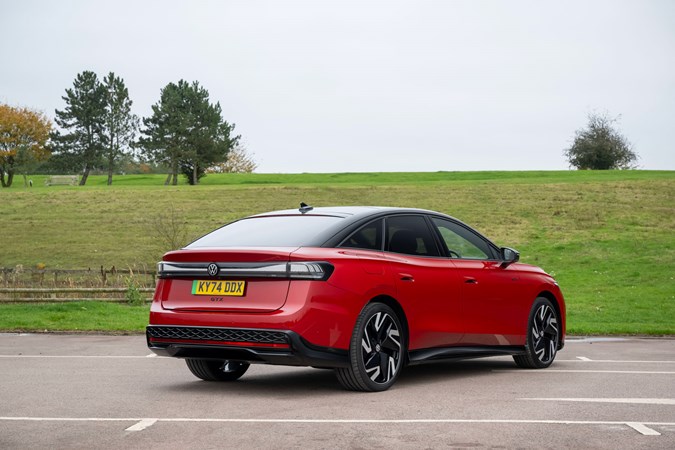
So, what’s the ID.7 GTX going up against? Well, even though this might be the raciest version of this Volkswagen yet, its power and performance figures are similar to many entry-level rivals, with the cheapest BMW i5 offering the same power level, albeit still at a much more expensive price.
The Mercedes-Benz EQE is in a similar position, while cheaper (but smaller) rivals to the ID.7 include the Tesla Model 3 and BYD Seal. You can also choose the GTX in two bodystyles, a large hatchback or the Tourer estate.
We’ve already driven the standard ID.7 extensively and have been behind the wheel of the GTX on the international launch in Sweden. But this is our first UK test of it – read more about how we test cars at Parkers. So is the ID.7 GTX is worth the extra money over the excellent standard car? Read on to find out.
What’s it like inside?
One of the best things about the standard ID.7 GTX is its interior, and the GTX only builds on that with its sporty elements. Suede on the seats and door cars helps to give it a racier feeling, while neat red detailing runs across the seats, steering wheel and dashboard. The ID.7 possibly has the best interior of any modern Volkswagen, with plenty of soft-touch materials throughout that give it a premium finish.
As with any modern electric Volkswagen, the interior is dominated by a large touchscreen that handles the majority of in-car functions, such as the driver assistance features and climate control. The screen is particularly quick and easy to use, though we would still prefer a few physical buttons for these core features. One thing we don’t like about the ID.7 is that to control the direction of the air vents, you have to do this through the touchscreen – it’s one thing that really did not need to be digitalised.
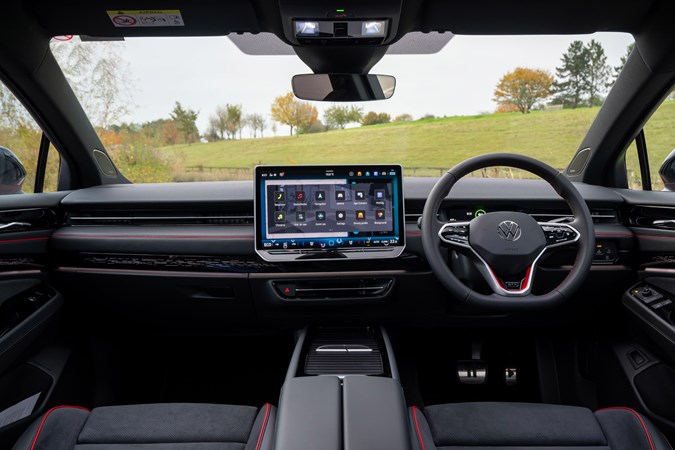
You can’t, however, knock the ID.7 for its interior space. It’s this sheer roominess that helped it win our Large Family Car award, and the GTX is every bit as practical. There is a huge amount of space on offer that means even taller adults can sit comfortably in the rear seats, regardless of bodystyle. The ID.7 is a big car at almost five metres, but at least Volkswagen has put the size to good use with generous interior storage and a large boot. The Tourer model is the more practical choice, especially if you have a dog, but you’re unlikely to be disappointed with either.
Comfort
Though the GTX might be a sportier model, it certainly hasn’t tarnished this car’s reputation for comfort. As with any ID.7, you get electric, heated and even massaging front seats, which are ideal for long journeys and commutes.
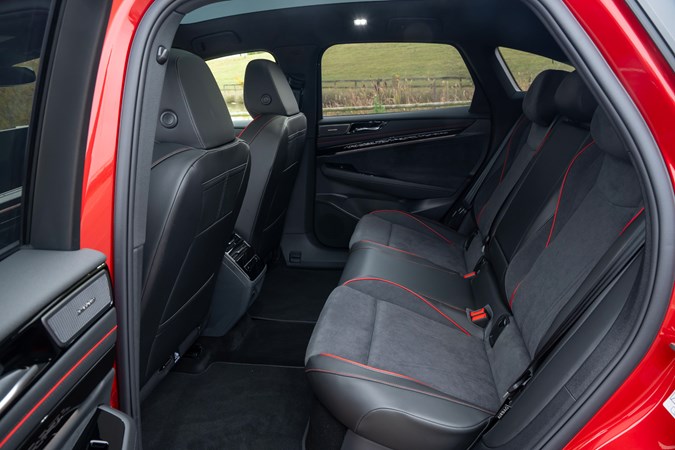
Those in the rear won’t feel hard-changed, either, with heated seats included for those in the back too. The GTX’s well-cushioned ride will keep passengers at ease, too. We’d consider choosing the optional ‘Darkening Panoramic Sunroof’ to give passengers the feeling of an even roomier car. The glass roof has a special film on it that can also shut out the light at the press of a button without the need for a conventional sunblind, too.
Safety
If you want a safe family car, you won’t do much better than the ID.7, which scored five stars when tested by Euro NCAP in 2023. Adult and child occupant protection scores of 95 and 88% are particularly impressive.
The level of standard driver assistance kit is very impressive, too, with adaptive cruise control, Matrix LED headlights, blind spot monitoring and a 360-degree camera system all included to name just a few features.
Electric motors
The only four-wheel-drive ID.7 you can buy is the GTX and that’s courtesy of its twin electric motors, one on either axle. A regular rear-wheel-drive ID.7 produces 286hp whereas the GTX takes this up to 340hp, making it one of the most powerful Volkswagens you can buy. In fact, the Tourer version is the most powerful estate car the firm has made.
Accelerating from 0-62mph takes 5.4 seconds (or a tenth of a second more for the Tourer), with the GTX’s top speed capped at 112mph for efficiency reasons. Both are around a second quicker to accelerate to 62mph compared to a standard ID.7.
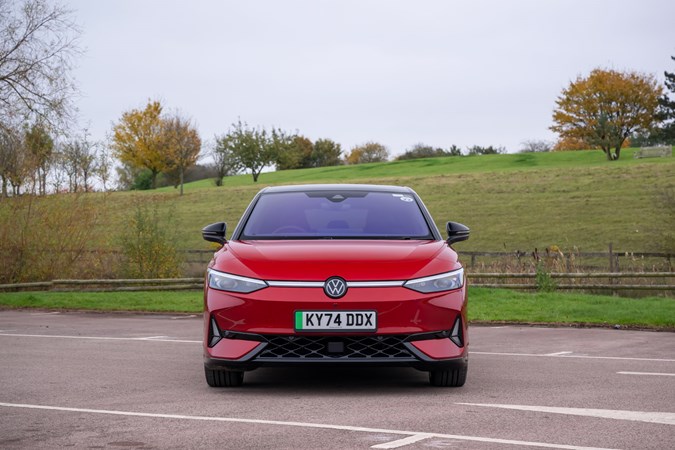
The GTX can also tow 200kg more than other ID.7 models, with a maximum towing capacity of 1400kg.
Range and charging
The ID.7 GTX uses the largest battery fitted to an electric Volkswagen as it’s equipped with an 86kWh unit. Volkswagen claims a range of up to 365 miles (359 for the Tourer). While this is a more than respectable figure, it’s the least range of any ID.7 – even the entry-level model equipped with a smaller 77kWh battery can manage a claimed 381 miles from a charge. The range-busting Pro S model, which also uses the 86kWh battery in the GTX, can travel a reported 436 miles of range.
As for charging, the ID.7 can be charged at up to 200kW using a suitably rapid charger, which enables a 10 to 80% top-up to take place in 26 minutes in ideal conditions.
What’s it like to drive?
The GTX doesn’t drive much differently to a regular ID.7 GTX, which is both a good and a bad thing. It’s good because it means it remains comfortable, but bad because it shows it’s not really sporty enough to warrant a new badge. Let’s explain.
For a performance derivative, at least in the electric world, having 54hp more than a regular version isn’t all that much power. If you put your foot down, the GTX feels brisker than the standard car, but not significantly so. Performance is more than enough for overtakes and when you need to get up to speed quickly, but it’s not an EV that ever shocks you with its performance, as it’s normally a predictable and smooth delivery.
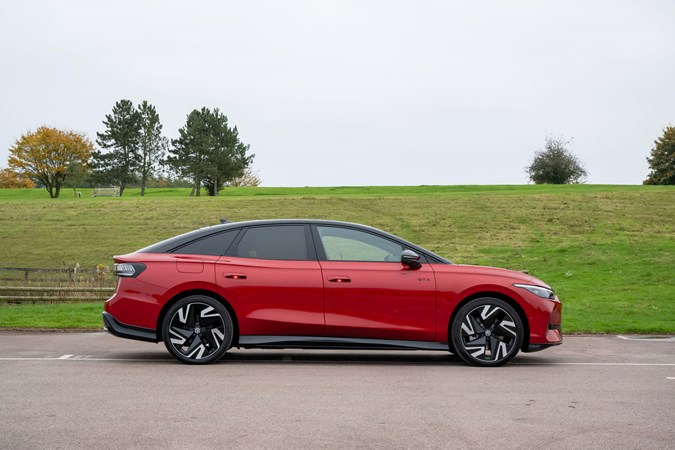
It’s a decent car to drive in a quicker manner, but then again so is a regular ID.7, as despite its comfort focus, it still handles well. The GTX has a slightly quicker steering rack and slightly less body roll, but you’d have to drive the cars back to back to notice a difference. For a performance car, you just expect that bit more, and the GTX can’t quite deliver on that.
More positive, however, is its ride comfort. The GTX is the only ID.7 to come with Volkswagen’s adaptive dampers (called DCC) as standard, which essentially lets you choose from 15 suspension settings with a touchscreen slider, from the softest, comfortable ride to the harshest. Towards the most comfortable end of the spectrum, the ride is excellent – supple but not overly so, and very well-judged. Add in a very quiet and refined driving experience and this ID.7 is still a great car for doing long journeys in.
What models and trims are available?
The GTX sits at the top of the ID.7 line-up, and given how well-equipped this EV is anyway, it’s no surprise this sporty model is kitted to the max.
All models come with heated, ventilated and massaging front seats as standard, along with keyless entry, 20-inch alloy wheels and an electric boot. A large 15-inch touchscreen is also provided, along with a head-up display, three-zone climate control and excellent Harman Kardon sound system.
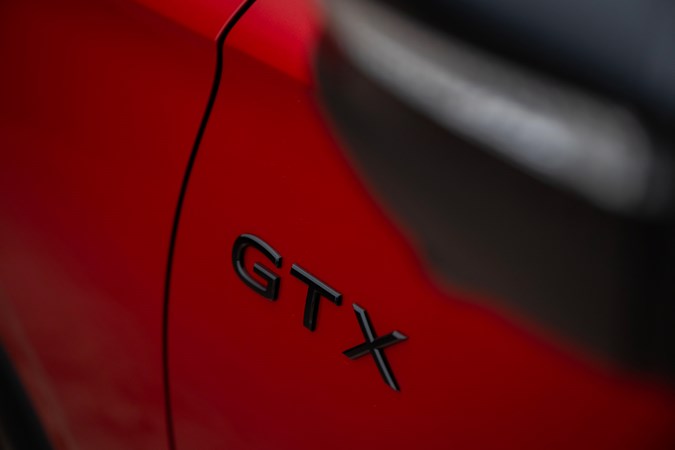
Pricing for the ID.7 GTX starts from £61,980 for the hatchback and £62,670 for the Tourer – a fairly small increase by estate car standards. Each represents a £6,500 increase on top of the long-range Pro S model – an extra it struggles to justify.
Despite the high pricing, there are still options you might want to consider. A heat pump to maximise the ID.7’s range will cost you £1,050, while the stylish darkening sunroof comes in at £1,100. Once you’ve added your paint colour and stylish 21-inch alloy wheels (they look great and don’t harm ride comfort), it starts to look quite expensive.
Read on for the full, expert verdict.


